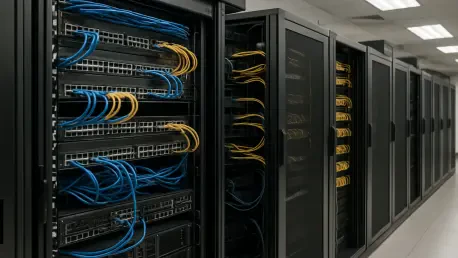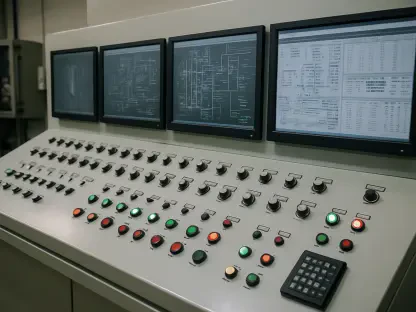The Data Center Switches Market is witnessing an unprecedented surge, driven by the escalating demand for cloud computing and artificial intelligence (AI) technologies that are reshaping the digital landscape across the globe. As enterprises worldwide embrace digital transformation to stay competitive, the reliance on high-speed, scalable networking infrastructure has become paramount. Data center switches, which serve as the critical backbone for efficient data transfer and seamless network management, are at the core of this technological evolution. These devices ensure uninterrupted communication between servers, storage systems, and end-users, supporting the backbone of modern applications. This article delves into the explosive growth of this dynamic market, examining the pivotal drivers behind its expansion, the transformative trends shaping its future, the regional variations in adoption, and the challenges that stakeholders must navigate. By exploring these facets, a clearer picture emerges of how this sector is poised to support the ever-growing demands of a connected world.
Forces Fueling Market Expansion
The relentless rise in global data traffic stands as a primary force propelling the Data Center Switches Market to new heights. With the proliferation of video streaming platforms, the surge in Internet of Things (IoT) devices, and the expanding realm of big data analytics, organizations face an urgent need to bolster their networking capabilities. High-capacity switches have transitioned from being an optional upgrade to an essential component for managing these massive data volumes without compromising speed or reliability. This demand is particularly evident in industries that rely on real-time data processing, where even a slight delay can result in significant operational setbacks. The necessity to handle such workloads is pushing companies to invest heavily in cutting-edge switching solutions that can keep pace with the digital deluge.
Another significant driver is the rapid expansion of hyperscale data centers, constructed by major technology giants and cloud service providers to support vast, complex operations. These facilities require robust switching infrastructure to manage the intricate interplay of servers and storage systems across sprawling networks. Additionally, the advent of edge computing, which prioritizes low-latency processing by bringing computation closer to data sources, further amplifies the need for advanced switches in distributed data center setups. The push toward higher bandwidth standards, such as 400G and beyond, also accelerates the replacement of outdated equipment, ensuring that networks remain future-ready. These combined factors underscore a market driven by both immediate needs and long-term strategic planning.
Transformative Trends in Networking Technology
A wave of innovation is reshaping the Data Center Switches Market through emerging trends that enhance flexibility and performance. One prominent shift is the move toward disaggregated network architectures, where hardware and software components are decoupled to allow for greater customization. This approach enables organizations to tailor their networking solutions to specific requirements, avoiding the constraints of traditional, monolithic systems. Simultaneously, the adoption of Software-Defined Networking (SDN) and Network Function Virtualization (NFV) is revolutionizing network management by introducing programmable, agile systems that can adapt to changing demands. These technologies empower businesses to optimize their infrastructure dynamically, ensuring efficiency in an increasingly complex digital environment.
Equally transformative is the integration of AI and machine learning into network operations, which is redefining how data centers maintain performance. AI-powered tools facilitate predictive maintenance by identifying potential issues before they escalate, while also optimizing traffic flow to prevent bottlenecks. This intelligent approach to network management is becoming indispensable as data loads grow exponentially. Furthermore, the rise of hybrid cloud environments, which blend on-premises and public cloud platforms, drives demand for switches capable of seamlessly connecting disparate systems. These trends collectively point to a market that is not only evolving rapidly but also becoming more specialized to address the nuanced needs of modern enterprises.
Global Reach and Regional Dynamics
North America continues to dominate the Data Center Switches Market, underpinned by its status as a hub for major cloud service providers and hyperscale data center projects. The United States and Canada benefit from early adoption of advanced technologies like AI, IoT, and 5G, which fuel the demand for high-performance switching solutions. This region’s well-established infrastructure and innovation-driven economy position it as a leader in setting global benchmarks for networking capabilities. The presence of tech giants investing heavily in data center expansion further solidifies North America’s role as a powerhouse, influencing market trends and technology standards worldwide.
Meanwhile, Europe holds a strong position with significant investments in digital infrastructure across countries such as Germany, the UK, and France, often driven by stringent regulatory requirements for data security and modernization. However, the Asia-Pacific region emerges as the fastest-growing market, propelled by rapid cloud adoption, a booming e-commerce sector, and ambitious smart city initiatives in nations like China and India. Emerging markets in Latin America and the Middle East & Africa are also gaining traction, supported by increasing internet penetration and government-led digital transformation efforts. This global mosaic of growth patterns highlights a unified push toward enhanced connectivity, with each region contributing unique drivers and opportunities to the market’s overall expansion.
Obstacles on the Path to Growth
Despite the promising trajectory, the Data Center Switches Market faces substantial challenges that could temper its momentum. The high initial costs associated with deploying advanced switching solutions present a significant barrier, particularly for small and mid-sized enterprises in less developed regions. These financial constraints can limit access to cutting-edge technology, creating disparities in adoption rates across different market segments. Moreover, the rapid pace of technological advancement leads to shorter product lifecycles, compelling organizations to allocate resources for frequent upgrades. This cycle of investment can strain budgets and complicate long-term planning for businesses striving to remain competitive in a fast-evolving landscape.
On the technical front, interoperability issues pose a persistent challenge, especially in hybrid cloud environments where switches from various vendors must coexist. These compatibility hurdles can disrupt network management and hinder seamless integration, requiring additional effort and expertise to resolve. Cybersecurity also looms large as a critical concern, with data center switches serving as prime targets for malicious attacks, necessitating robust protective measures. Compounding these issues is the global semiconductor shortage, which disrupts supply chains and delays the production of essential networking equipment. Addressing these multifaceted obstacles demands strategic foresight and innovative solutions to sustain the market’s upward trajectory.
Navigating Future Opportunities
Looking back, the Data Center Switches Market demonstrated remarkable resilience and adaptability in overcoming past hurdles while capitalizing on technological advancements. The surge in cloud adoption and AI-driven workloads had already set a strong foundation for growth, as businesses recognized the indispensable role of high-speed switches in supporting digital transformation. Reflecting on previous years, the industry successfully navigated initial challenges like high costs by fostering collaborations between manufacturers and cloud providers to develop cost-effective solutions. These partnerships proved instrumental in broadening access to advanced technologies across diverse sectors.
As a next step, stakeholders should focus on harnessing emerging opportunities such as the rollout of 5G networks, which promise to amplify demand for low-latency switches in edge computing applications. Investing in energy-efficient solutions also aligns with global sustainability goals, offering a pathway to reduce operational costs while meeting environmental targets. Additionally, targeting untapped potential in emerging markets through tailored offerings can drive further expansion. By prioritizing innovation and strategic alliances, the market can build on its past achievements to address future demands, ensuring that data center switches remain at the forefront of enabling a connected, intelligent world.









